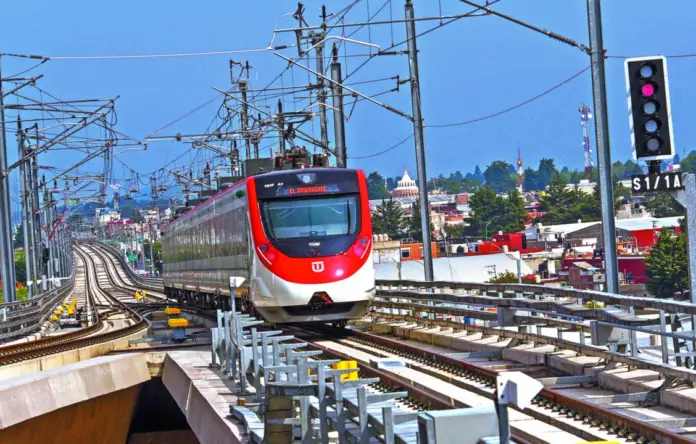The Interoceanic Corridor has not only become a magnet for investment, but also serves as an industrial catalyst, through the construction industry, in the states it hosts.
According to seasonally adjusted figures from the National Institute of Statistics and Geography (INEGI), 19 of the 32 states registered annual increases in their industrial activity last year.
Oaxaca led the nation’s industrial growth in 2024, with an annual growth of 11.6%, a result of the construction of the Isthmus of Tehuantepec railway and its development hubs, which it shares with Veracruz.
Along the Interoceanic Corridor, which connects the Pacific and Atlantic Oceans, 14 Development Poles for Well-being (Podebis) are planned. These properties range from 80 to more than 500 hectares and are currently in the process of being practically activated, for the development of the automotive, energy generation, pharmaceutical, and agro-industrial industries, among others.
Recently, Raúl Ruiz Robles, Secretary of Economic Development for the state of Oaxaca, shared with El Economista that the state has six development poles, which are estimated to receive more than 720 billion pesos in investment over the next six years.
Competing with the rest of the world
It is worth remembering that the Interoceanic Corridor aims to leverage the isthmus’s position to compete in global markets for the movement of goods.
To this end, the Isthmus of Tehuantepec Railway, the ports of Coatzacoalcos in Veracruz and Salina Cruz in Oaxaca, will be modernized; highway and rural road infrastructure, as well as the port network, will be strengthened; and a gas pipeline will be built to supply businesses and domestic consumers.
Durango came in second, with an increase of 8.2% over the past year, while Colima completed the podium (5.7%); Veracruz followed in fourth place with an annual increase of 5.6% (largely due to the Isthmus of Tehuantepec Railway).
Other significant increases in industrial activity, above 2.5%, were observed in the state economies of Guanajuato, Guerrero, Puebla, Nuevo León, the State of Mexico, Querétaro, Baja California Sur, Tamaulipas, Hidalgo, and Yucatán.
Meanwhile, the states that fell below 2% were Morelos, Chiapas, Sonora, Zacatecas, and Chihuahua.
The Declines
However, it was observed that the impact on the construction sector of the major federal projects of the previous federal administration was completely diluted in the industry of the south-southeast region of Mexico.
Of the 13 states that registered annual declines in their industrial activity throughout last year, according to seasonally adjusted data, the steepest decline was in Quintana Roo’s industrial production, with an annual drop of 20.2 percent.
This was a consequence of the collapse experienced by the construction industry following the completion of the Tulum International Airport and the Mayan Train, noting that the latter accounts for the largest percentage of construction sections in the state.
Meanwhile, the second-deepest decline in 2024 was in Tabasco, with a negative annual variation of 12.4% in its industrial activity, which is comprised of manufacturing, mining, construction, and electric power.
The state’s weaknesses were oil mining and construction; the former, its main economic focus, suffered adverse results due to low production and the decline in international crude oil prices.
On the construction side, the completion of the Dos Bocas refinery negatively impacted the state’s industrial sector, in addition to the completion of the Maya Train (the railway runs through Tabasco, Chiapas, Campeche, Quintana Roo, and Yucatán).
The other declines in industrial production in 2024 were in Nayarit, Campeche, Sinaloa, Michoacán, Aguascalientes, Jalisco, Coahuila, Mexico City, San Luis Potosí, Tlaxcala, and Baja California.

Source: eleconomista




